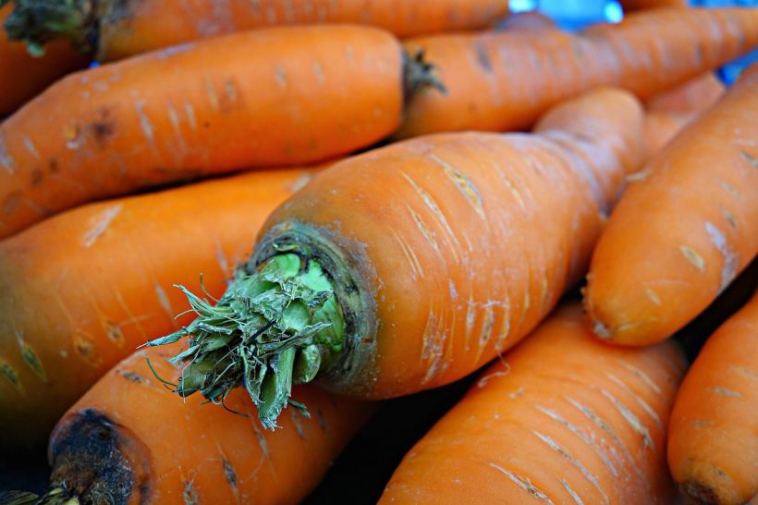- Like
- SHARE
- Digg
- Del
- Tumblr
- VKontakte
- Flattr
- Buffer
- Love This
- Save
- Odnoklassniki
- Meneame
- Blogger
- Amazon
- Yahoo Mail
- Gmail
- AOL
- Newsvine
- HackerNews
- Evernote
- MySpace
- Mail.ru
- Viadeo
- Line
- Comments
- Yummly
- SMS
- Viber
- Telegram
- JOIN
- Skype
- Facebook Messenger
- Kakao
- LiveJournal
- Yammer
- Edgar
- Fintel
- Mix
- Instapaper
- Copy Link
Introduction
In recent times, a great deal of attention has been placed on immunity-boosting vitamins and minerals for the body. More and more experts are emphasizing the need for vitamin C and Vitamin D to boost immunity.
The need for probiotics has also arisen off late for better digestion and gut health. And you can get probiotics from fermented foods as well as from blueberries that also contain high levels of antioxidants and probiotics. Besides, the importance of getting protein from eggs and pulses is another highlight to consider.
But what is the real deal on vitamin A? Let’s look at why you need this crucial vitamin and how to obtain it.
Understanding Vitamin A
Involved in several functions, vitamin A is a fat-soluble vitamin. It promotes vision and maintains healthy bones and skin, affecting growth positively and supporting the immune system.
Typically, the amount of vitamin A you need will depend on your age and sex. According to experts, adult women may require approximately 700 mcg RAE and men, 900 mcg RAE. Pregnant and breastfeeding women may need higher dosages.
In foods, preformed and pro-vitamin A are abundantly available. Hence the content of vitamin A in foods and recommended amounts are measured as RAE micrograms — the average daily recommended amounts are listed as micrograms (mcg) of retinol activity equivalents (RAE). By eating plenty of vitamin A-rich food every day, you could avoid the need for supplementation.
Foods Rich In Vitamin A
While naturally present in several foods, Vitamin A is also added to specific foods such as cereals, non-dairy beverages, and milk. Animal sources provide the active form of vitamin A — preformed vitamin A — for the body to use right away. You can get preformed vitamin A through meat, fish, dairy and poultry. Provitamin A comes from plant sources that the body converts to an active form of vitamin A.
One common form of Provitamin A is beta-carotene that is found in vegetables and fruits. Beta-carotene is an important antioxidant that safeguards cells from free radical damage. This form of vitamin A is also abundantly seen in bright-coloured fruits and vegetables such as red, orange and yellow fresh produce and dark and leafy greens.
Here is a list of vitamin A-rich foods that you can explore.
Sweet Potatoes
Regarded as one of the highest sources of vitamin A, sweet potatoes provide you with more than a day’s worth. This delicious spud is also abundant in fiber and other vital minerals and vitamins. Ensure that you also consume the skin along with the flesh to get the most out of every bite. You can use sweet potatoes to top up your black beans, guacamole, salsa and more. You could also dice sweet potatoes to have heartier salads and fuller grain bowls. Or better still, eat a baked sweet potato on its own as a meal.
Carrots
Carrots are also an excellent source of vitamin A. Not only do they add color and texture to your food, but they also provide you with this vital vitamin and necessary fiber.
Mangoes
A great way to ensure you get vitamin A in your day is through mangoes. You can easily blend fresh mango pulp or frozen mangoes into smoothies or consume them on their own for a great snack. You can also combine carrots and mangoes together to get even more vitamin A packed into every sip.
Eggs
As an economical, nutrient-dense and an excellent source of quick protein, eggs are indispensable in one’s diet. To get the most out of vitamin A from of an egg, it is essential to eat the whole egg as the yolk is abundant in the vitamin.
Leafy Vegetables
While the above are orange foods containing vitamin A, you would also be pleasantly surprised to know that dark leafy vegetables are excellent sources of vitamin A. You can spice up your salad greens with kale and spinach or choose to eat collard greens and Swiss chard with dinner.
Conclusion
While several foods in nature are rich in vitamin A, you can also choose to opt for fortified milk and non-dairy beverages containing vitamin A. Most tetra Pak milk products include vitamin A; many non-dairy alternatives add vitamin A as well. Remember to look into the ingredient list to see the vitamin A composition in any fortified food you are consuming to ensure you meet your daily target.
About the Author:
Karishma is a passionate freelance writer. Her main writing includes about overall health and wellness subjects. Her recent freelancing work is with Nutra Pure HCG, an online shop for homeopathic hcg diet drops, helps to lose 1 to 2 pounds per day naturally.
About Theresa Duncan
Originally from Detroit, MI, Theresa has been offering health and fitness advice for the last 30 years while working as an engineer. She decided to turn her passion into a profession, and finds nothing more satisfying than helping others reach their health and fitness goals.

